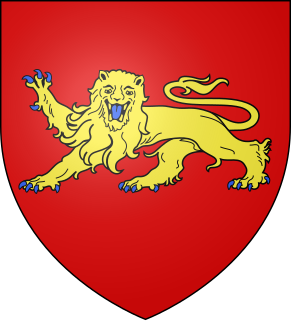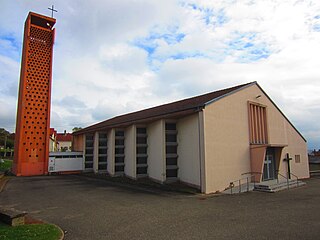Jeanne de Bourbon was a daughter of John II, Count of Vendôme and Isabelle de Beauvau. Through her daughter Madeleine, she was the maternal grandmother of French queen consort Catherine de' Medici.
André de Laval-Montmorency, seigneur de Lohéac was a Marshal of France. He was the son of Guy XIII de Laval and Anne de Laval, and a leading member of the House of Laval.

John II of Alençon was the son of John I of Alençon and his wife Marie of Brittany, Lady of La Guerche (1391–1446), daughter of John V, Duke of Brittany and Joan of Navarre. He succeeded his father as Duke of Alençon and Count of Perche as a minor in 1415, after the latter's death at the Battle of Agincourt. He is best known as a general in the Last Phase of the Hundred Years' War and for his role as a comrade-in-arms of Joan of Arc, who called him "le beau duc".
Guy XIV de Laval, François de Montfort-Laval,, comte de Laval, baron de Vitré and of La Roche-Bernard, seigneur of Gâvre, of Acquigny, of Tinténiac, of Montfort and Gaël, of Bécherel, was a French nobleman, known for his account of Joan of Arc. He and his brother André de Lohéac were simultaneously vassals of the duke of Brittany and of the king of France.
Guy XIII de Laval, born Jean de Montfort, was seigneur of Laval and of Kergorlay. His father was Raoul IX de Montfort and his mother Jeanne de Kergorlay.
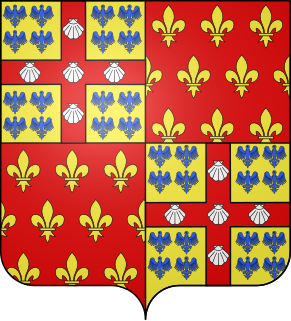
Anne de Laval was a medieval French noblewoman. She was the daughter of Jeanne de Laval-Tinténiac and her second husband Guy XII de Laval, governor of Brittany and baron of Laval.
François de La Trémoille (1505–1541) was a French nobleman of the La Tremoille family. He was the son of Charles I de la Trémoille and of Louise de Coëtivy.
Alice de la Roche, Lady of Beirut, Regent of Beirut was the wife of John II of Ibelin, Lord of Beirut, in the Kingdom of Jerusalem. She was a daughter of Guy I, Lord of Athens. Alice is sometimes referred to as Alice of Athens. Alice was Regent of Beirut for her daughter Queen Isabella of Cyprus, during the latter's absence in Cyprus.

Marie of Brittany (1444–1506) was the younger daughter of Francis I, Duke of Brittany, by Isabella, daughter of King James I of Scotland. She was married to John II, Viscount of Rohan and Count of Porhoët.
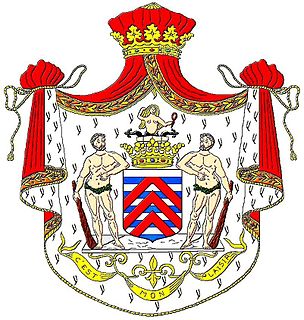
The title of Duke de La Rochefoucauld was a French peerage belonging to one of the most famous families of the French nobility, whose origins go back to lord Rochefoucauld in Charente in the 10th and 11th centuries. It became Rochefoucauld in the 13th century.
Isabella of Brittany was a daughter of John V, Duke of Brittany, and his wife, Joan of Valois. Isabella was a member of the House of Dreux.

Jeanne de Fougères, was ruling suo jure Lady of Fougères from 1256. She was the wife of Hugh XII of Lusignan, Count of La Marche and Count of Angoulême. Jeanne was responsible for the later additions and fortifications of the Chateau of Fougères which provided a greater stability for the town.
Hugh I, of Ghent was lord of Heusden, Bornhem, and Saint-Jean Steene, Chatelain of Ghent. Hugh was the eldest child of Zeger III of Ghent and Beatrix of Heusden.
Isabella de la Roche was a daughter of Guy I de la Roche. She was married twice, firstly to Geoffrey of Briel, Lord of Karytaina and then secondly to Hugh, Count of Brienne, having children only with her second husband.
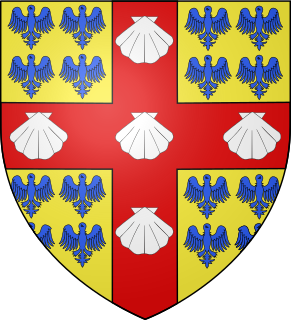
Guy XVI, Count of Laval, Mayenne was a member of the House of Laval. He was christened Nicolas, but upon inheriting the title, he took the required name of Guy, as his predecessors had done. He was the son of Jean de Laval, who was the brother of Guy XV and the son of Guy XIV and Isabella of Brittany.

Jeanne de Clisson (1300–1359), also known as Jeanne de Belleville and the Lioness of Brittany, was a Breton privateer who plied the English Channel.
Andrew III of Vitré was Baron of Vitré and Aubigné from 1211 to 1250.
